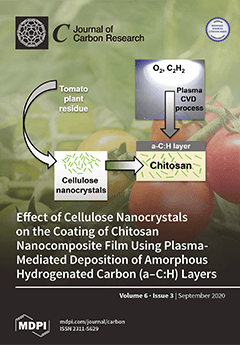Development of a practicable artificial photosynthesis process has been considered today as one of the top-most research priorities to address the problems related to the global warming and the associated social cost of carbon, and to develop the renewable fuels employable in place
[...] Read more.
Development of a practicable artificial photosynthesis process has been considered today as one of the top-most research priorities to address the problems related to the global warming and the associated social cost of carbon, and to develop the renewable fuels employable in place of fossil fuels. For this purpose, a simple and inexpensive route has been devised to synthesize a high-purity bmim[BF
4] to employ as a helper catalyst to promote the electrochemical CO
2 reduction (ECR) to CO formation over Sn and MoSi
2 cathodes. The rates of CO
2 reduction over Sn and MoSi
2 cathodes have been determined to be >110 mA/cm
2 during cyclic voltammetry. The CO formation at a current density of >100 mA/cm
2 in the ECR reaction is very essential to consider this reaction for industrial practice when the required electricity derived from sunlight is available at an affordable price. The bmim[BF
4] mediated ECR reaction over Sn and MoSi
2 cathodes has been identified to be a revere reaction of CO oxidation in air. The experiments with isotopic
13CO
2 confirmed that CO
2 is the only source of CO formation in the ECR reaction. The underlying reaction mechanism in bmim[BF
4] mediated ECR reaction over Sn has been presented and discussed in this article.
Full article





